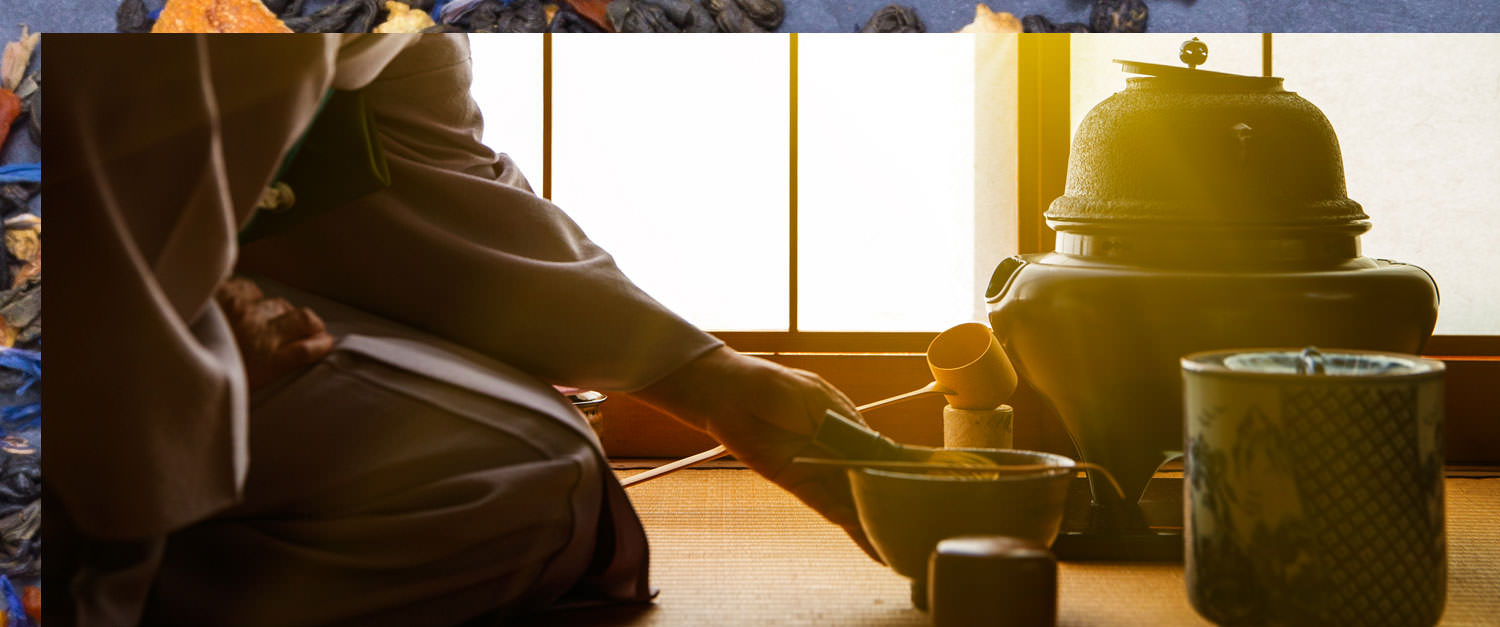
Round Trip
Tea Travels: Around the World in 80 Sips
You’ve plotted the museums, mapped out the best restaurants & made note of the open-air markets you want to visit on your next vacation abroad. Congrats! But have you figured out where to take your Tea? We thought not.
Much like sampling the regional cuisine in some hard-to-find-but-totally-worth-it hole-in-the-wall, a tea tasting can give you a real, live-like-the-locals experience that will take you off the beaten path.
Whether you’re experiencing the bombillas of Buenos Aires or the chai wallahs of Bombay, you’ll feel less of a tourist & more like an insider with great snaps to send the folks back home. Because if a trip doesn’t incite Insta-envy, did it really happen?
Japan’s Matcha Ceremony
Think of Matcha like the energy drink of the Middle Ages. The frothy hot beverage made from pulverized Green Tea leaves was first created in the 12th century by Zen Buddhist monks who drank Matcha to stay focused during long periods of meditation. 100 years later, they taught the art of making Matcha to Samurai warriors. Today, you can experience the formal tea ceremony called the chanoyu at teahouses throughout Tokyo & Kyoto.
There’s only one proper response when you’re handed the Yerba Maté gourd & that’s“gracias".
The experience is more high art than high tea. Every movement is choreographed, from how to fold a cloth to how to pick up a ladle. Granted, it may not be the most raucous time you’ll ever have in a tatami room, but “a chanoyu is like watching a deeply immersive dance performance,”
says Sara Kadowaki, a former investment banker who went on to launch Sara's Tea Caddie, an importer of high-end Japanese Teas. “You’re completely in the moment.”
India’s Chai Wallahs
On every urban street corner & remote roadside, you’ll find a “chai wallah”
selling his homemade brew of Chai Tea (yes, most chai wallahs are dudes). Patronize 12 different wallahs & you’ll taste 12 distinct takes on the spicy Black Tea. This is because Chai recipes are passed down through generations. The recipes may vary, but the technique is the same. On a big saucepan over an open flame, the chai wallah brings water, Tea Leaves & his secret blend of Ginger, Cardamom, Clove, Pepper, Cinnamon, Sugar & Milk to a boil. Order a Chai & he’ll pour tea through a strainer into a smaller pot, then into your cup.
Tea tasting can give you a real, live-like-the-locals experience that will take you off the beaten path.
“There’s great panache to the preparation,”
says Cren Sandys-Lumsdaine, the general manager of McLeod Russel, the largest tea producer in the world. “Some wallahs pour the Tea from way above their head.”
The drama doesn’t end there. Chai is traditionally served in an earthenware cup & after you drain the brew, it’s customary to smash the cup against the ground. There the sun breaks down the shards & returns the clay to the earth, circle of life-style.
China’s Gong Fu Ceremony
When a close friend visits, we might break out a bottle of our best vintage red & feel like we’ve made a real effort. We’ve got nothing on the Chinese. Ever since the 17th century, the arrival of an honored guest has called for brewing tea Gong Fu style. That means hauling out special equipment, including a small clay teapot called a yixing. (And you thought using actual wineglasses over a solo cup was a big deal.)
The host’s movements during the highly ritualized Gong Fu ceremony are all counterclockwise. That’s symbolic of being open and welcoming, says Kyle Stewart, co-owner of The Cultured Cup, a Dallas Tea purveyor. As the guest, you have a protocol to follow, too. You drink the tea in 3 sips, slurping loudly on the final gulp to signal to your host that you’ve finished the cup. In traditional Gong Fu ceremonies, Tea leaves might be infused 7 or 8 times. And with each new infusion, you’re expected to comment on the taste of the Tea. Pro tip: you can’t go wrong with a simple hěnhǎo chī. That’s “delicious”
in Mandarin.
Argentina’s Communal Yerba Maté
If an Argentine invites you over for an asado, or BBQ, you can be sure Yerba Maté, an invigorating Tea, will make an appearance. Maté leaves are packed into a hollow calabash gourd with a bombilla, a metal straw with a strainer on the bottom, inserted in the middle. Like a never-ending pitcher of margaritas, the gourd is continuously refilled with hot water.
And so it goes, sometimes for hours, with everyone drinking out of the same bombilla. It’s a tradition of fellowship that goes back 100s of years to the gauchos who would form a Maté circle around a fire. Think sharing a straw with 4 or 6 or more people is kinda “ew?”
Then stay away. “If you’re sitting with others who are drinking Maté, it’s an insult not to join in,”
says Bill Hall, a partner in South Carolina’s Charleston Tea Plantation who lived in Argentina for several years. “There’s only one proper response when you’re handed the gourd & that’s
“gracias.”
”